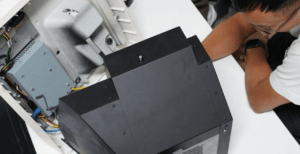In the realm of product development, creating something from nothing is a journey fraught with challenges, breakthroughs, and moments of pure innovation. But beyond the mechanics of designing and prototyping lies a powerful tool often underutilized by product managers: storytelling. In today’s market, where consumers crave authenticity and transparency, narrating your product’s prototyping story can be as crucial as the product itself.
As a product manager, you are not just an overseer of the development process; you are the bridge between concept and consumer, the narrator of an unfolding tale. This post is designed to help you harness the potential of storytelling to elevate your product’s brand and forge a deeper connection with your audience. Let’s weave a narrative that not only captivates but also immerses your audience in the very essence of your product’s creation.
The Importance of Product Development Narratives for Product Branding
Your product’s prototyping phase isn’t just about problem-solving—it’s a storyline ripe with potential for product branding. Documenting the evolution from a rough sketch to a tangible object pulls back the curtain on the innovation process, simultaneously fostering engagement and demystifying design. Every decision in the prototyping journey adds a layer to the product’s story, each iteration shaping the path forward. Sharing this narrative does more than pique interest; it humanizes your product, building a relationship with future users before they even interact with it. Mounted on the backbone of transparency, this approach deepens consumer trust. Audiences value insight into the dedication and rigor that go into product development. They start to see your product as more than a utility; it becomes a brainchild born of hard labor and visionary effort.

How to Craft Product Development Narratives in Product Development
1.Setting the Scene
Before the curtain rises, set the stage for your audience. Establishing context is vital—it’s the framework upon which your narrative will rest. Begin by clarifying the “why” behind your product. Delve into what sparked the need for this new invention. Was it a gap in the market, customer feedback, or an advancement in technology?
Setting the scene also entails introducing the team behind the prototype. Highlighting the creators’ expertise, dedication, and passion adds depth to your narrative, allowing consumers to see the hearts and minds driving the project. Introduce the setting—whether it’s a high-tech lab or a garage-turned-workshop—to imbue your story with a sense of place.
2.Exploring the Prototyping Odyssey
The heart of your prototyping narrative lies in the odyssey—the challenges faced, obstacles overcome, and ingenious solutions crafted along the way. Each prototype iteration tells a tale of trial and error, of learning and adaptation.
Reminisce on your initial designs, the hypotheses you tested, and the outcomes that led you to pivot or persevere. Share anecdotes of late-night brainstorming sessions or serendipitous moments when things clicked. Including both successes and setbacks not only adds realism to the narrative but also demonstrates your team’s resolve.
Visual elements like sketches, 3D renderings, and photos of the product in various stages of development provide tangible milestones. Utilizing video content for demonstrations or team interviews can evoke emotions and connect with viewers on a personal level.
3. Building Anticipation
As product managers, crafting suspense and excitement is key in engaging your audience. Use this storytelling opportunity to tease upcoming features or pivotal breakthroughs. Develop a cadence of regular updates, each serving as a cliffhanger that leaves your audience awaiting the next reveal.
Creating teaser videos can be particularly effective in this phase. They allow you to visually hint at features, design elements, or innovations without unveiling the full picture. These teasers can live across social platforms, tapping into the power of social engagement to spread buzz and kindle conversation around your product.
Releasing snippets of the prototyping process aligns your narrative with the rhythms of your audience’s online interactions. They become active participants, following your journey and rooting for the product’s success as each snippet brings them closer to the launch.
4. Sharing Milestones
Throughout your storytelling, recognize and celebrate milestones. These serve as anchors for your narrative, offering your audience moments of fulfillment and shared achievement.
Did you complete a fully functional prototype? Secure a patent? Each milestone, no matter how small, is a testament to progress and an opportunity for engagement. It also demonstrates that your team values and recognizes the importance of each step in the journey to the final product.
5. Humanizing the Narrative
Infuse your narrative with humanity. Personal stories and experiences enhance relatability, encouraging your audience to invest emotionally in your product.
For instance, if a team member had a eureka moment that led to a design breakthrough, share it. Frame these stories as journal entries or blog posts that chronicle the day-to-day developments and personal reflections of the team. The human element distinguishes your narrative in a sea of impersonal marketing content.
6. Tech-Savvy Storytelling
In a world where attention spans are short, weaving tech-savvy tactics into your storytelling can bolster engagement. This could include using augmented reality (AR) to give a sneak peek of your product in the real world or virtual reality (VR) experiences that take users inside the prototyping lab.
Innovative use of technology in storytelling not only highlights your product’s cutting-edge credentials but also caters to a digitally native audience eager for immersive experiences.

Beyond Product Development: Crafting Your Go-to-Market Narrative
The narrative crafted during the product development phase should fluidly transition into your go-to-market strategy. Your storytelling shouldn’t culminate with the birth of the final product but rather set the stage for a continued tale of innovation, scalability, and user experience.
As your product approaches launch, gradually shift the narrative to focus on the users. Highlight use cases, potential impacts on daily life, and community stories. Engage with early adopters, gather their stories, and weave them into the larger narrative tapestry of your product.
As a product manager, you have the unique opportunity to shape this narrative into one of openness, innovation, and human endeavor.
In doing so, you create more than a consumer base; you forge a community of advocates who resonate with your product’s story and share in its successes and challenges. This community becomes a cornerstone for branding and marketing, a collective of voices that amplifies your product’s presence in the marketplace.
So, as you embark on your next product development adventure, remember that the story of creating is as potent as the product itself.
Storytelling becomes your silent salesman, building anticipation, nurturing trust, and ultimately, paving the way for a successful launch.




